
Battletoads is a beat 'em up/platform video game developed by Rare and published by Tradewest. It is the first installment of the Battletoads series and was originally released in June 1991 for the Nintendo Entertainment System. It was subsequently ported to the Mega Drive and Game Gear in 1993, to the Amiga and Amiga CD32 in 1994, and released with some changes for the Game Boy in 1993 in the form of Battletoads in Ragnarok's World. In the game, three space humanoid toad warriors form a group known as the Battletoads. Two of the Battletoads, Rash and Zitz, embark on a mission to defeat the evil Dark Queen on her planet and rescue their kidnapped friends: Pimple, the third member of the Battletoads, and Princess Angelica.

Chase H.Q. is a vehicular combat racing game, originally released as an arcade video game by Taito in 1988. It is sometimes seen as a spiritual successor to Taito's earlier Full Throttle. The player assumes the role of a police officer named Tony Gibson, member of the "Chase Special Investigation Department". Along with his partner, Raymond Broady, he must stop fleeing criminals in high-speed pursuits in a black Porsche 928.
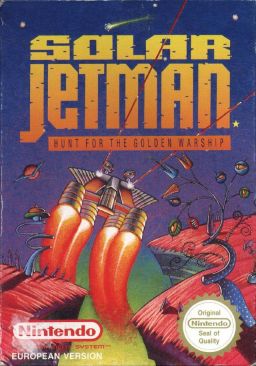
Solar Jetman: Hunt for the Golden Warpship is a multi-directional shooter video game developed by Zippo Games and Rare and published by Tradewest in North America and by Nintendo in Europe. It was released in North America on 14 October 1990 and in Europe on 26 September 1991 for the Nintendo Entertainment System. The game is the third installment of the Jetman series and was later re-released by Nintendo for their NES-based PlayChoice-10 arcade system in the United States in 1990.
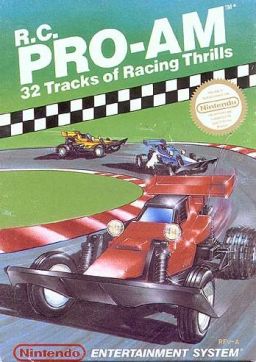
R.C. Pro-Am is a racing video game developed by Rare and published by Nintendo for the Nintendo Entertainment System. It was released in North America in February 1988, and then in Europe on April 15. Presented in an overhead isometric perspective, a single player races a radio-controlled car around a series of tracks in vehicular combat. Each track qualifies its top three racers for the next track. Collectible power-up items improve performance, hazards include rain puddles and oil slicks, and missiles and bombs can temporarily disable opponents. Originally titled Pro Am Racing, it was ported to the Sega Genesis in 1992 as Championship Pro-Am, an enhanced remake with enhanced graphics and additional features. R.C. Pro-Am spawned two sequels: Super R.C. Pro-Am in 1991, and R.C. Pro-Am II in 1992.

Paperboy is an arcade action game developed and published by Atari Games, and released in 1985. The player takes the role of a paperboy who delivers a fictional newspaper called The Daily Sun along a street on his bicycle. The arcade version of the game featured bike handlebars as the controller.

Stunt Car Racer is a racing video game developed by Geoff Crammond. It was published in 1989 by MicroProse, under their MicroStyle and MicroPlay labels in the United Kingdom and in the United States, respectively. The game pits two racers on an elevated track on which they race in a head-to-head competition, with ramps they must correctly drive off as the main obstacle.
1989 saw many sequels and prequels in video games, such as Phantasy Star II, Super Mario Land, Super Monaco GP, along with new titles such as Big Run, Bonk's Adventure, Final Fight, Golden Axe, Strider, Hard Drivin' and Teenage Mutant Ninja Turtles. The year also saw the release of the Sega Genesis and TurboGrafx-16 in North America, and the Game Boy worldwide along with Tetris and Super Mario Land.
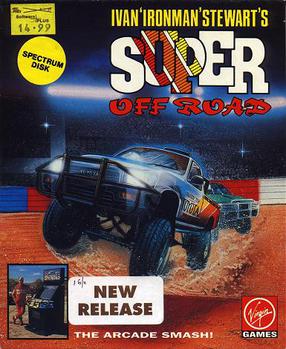
Ivan "Ironman" Stewart's Super Off Road is an arcade video game released in 1989 by Leland Corporation. The game was designed and managed by John Morgan who was also lead programmer, and endorsed by professional off-road racer Ivan Stewart. Virgin Games produced several home versions in 1990. In 1991, a home console version for the Nintendo Entertainment System was later released by Leland's Tradewest subsidiary, followed by versions for most major home formats including the Master System, Genesis, Super NES, Amiga, and MS-DOS. A port for the Atari Jaguar was announced but never released. Some of the ports removed Ivan Stewart's name from the title due to licensing issues and are known simply as Super Off Road.
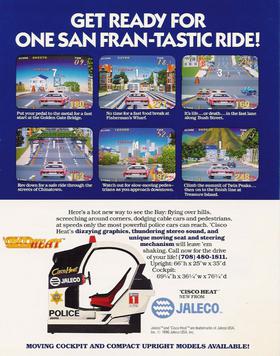
Cisco Heat: All American Police Car Race is a 1990 racing video game developed and published in arcades by Jaleco. Players control a police squad car racing against computer-controlled vehicles. The goal is to finish each race in first place. Players can take different routes to bypass certain portions of the course. Three cabinet types were created, a standard upright, a sit-down, and a motion-based "deluxe" machine; both of these could be connected, or "linked", together to enable multiplayer.

Double Dragon is a 1987 beat 'em up video game developed by Technōs Japan and distributed by Taito for arcades across Asia, North America and Europe. It is the first title in the Double Dragon franchise. The game's development was led by Yoshihisa Kishimoto, and it is a spiritual and technological successor to Technos' earlier beat 'em up, Nekketsu Kōha Kunio-kun (1986), released outside of Japan by Taito as Renegade; Kishimoto originally envisioned it as a direct sequel and part of the Kunio-kun series, before making it a new game with a different cast and setting.

There have been several video games based on the 1991 film Hook. A side-scrolling platform game for the Nintendo Entertainment System (NES) and Game Boy was released in the United States in February 1992. Subsequent side-scrolling platform games were released for the Commodore 64 and the Super Nintendo Entertainment System (SNES), and an arcade beat ‘em up by Irem later in 1992, followed by versions for the Sega CD, Sega Genesis, and Sega's handheld Game Gear console in 1993.

RoboCop 2 is a platform shooter video game based on the 1990 film of the same name. The game was released for several platforms, including Amiga, Amstrad GX4000, Atari ST, Commodore 64, Game Boy, Nintendo Entertainment System, and ZX Spectrum. Ocean Software developed and published several versions, and Data East manufactured an arcade version.
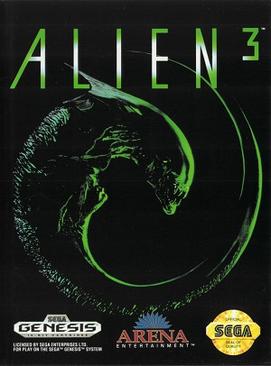
Alien 3 is a run and gun game based on the 1992 film of the same name. It was released for the Genesis and Amiga in 1992, then for the Commodore 64, Game Boy, Game Gear, Nintendo Entertainment System, Super Nintendo Entertainment System, and Master System.
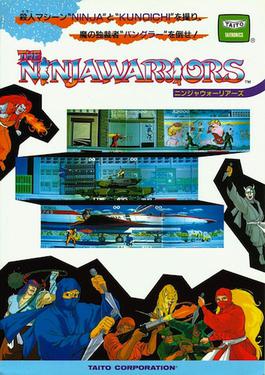
The Ninja Warriors (ニンジャウォーリアーズ) is a side-scrolling beat 'em up video game developed and released by Taito in 1987. The original arcade game situated one display in between projected images of two other displays, creating the appearance of a triple-wide screen. Ports were released for home systems including the Amiga, Atari ST, ZX Spectrum, Commodore 64, Amstrad CPC, PC Engine, and Sega Mega-CD.
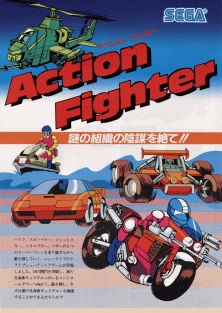
Action Fighter is an overhead vehicular combat game released by Sega for arcades in 1986. It was ported to the Master System the same year, and then to the Amiga, Amstrad CPC, Atari ST, Commodore 64, ZX Spectrum and IBM PC compatible computers.

Super Monaco GP is a Formula One racing simulation video game released by Sega, originally as a Sega X Board arcade game in 1989, followed by ports for multiple video game consoles and home computers in the early 1990s. It is the sequel to the 1979 arcade game Monaco GP. The arcade game consists of one race, the Monaco Grand Prix, but later ports added more courses and game modes based on the 1989 Formula One World Championship.

Power Drift is a kart racing game released in arcades by Sega in 1988. More technologically advanced than Sega's earlier 2.5D racing games, like Hang-On (1985) and Out Run (1986), in Power Drift the entire world and track consist of sprites. The upgraded hardware of the Sega Y Board allows individual sprites and the background to be rotated–even while being scaled–making the visuals more dynamic.
Ever since Pole Position in 1982, Formula One (F1) has always played a part of the racing genre in video games. Early Formula One games were typically arcade racing games, before Formula One Grand Prix (1991) popularized Formula One racing simulations on home computers.
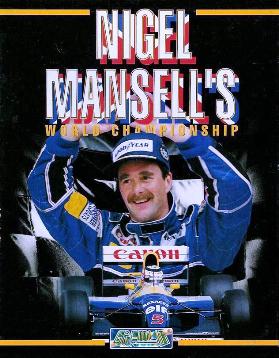
Nigel Mansell's World Championship Racing is an arcade-style Formula One racing video game developed by Gremlin Graphics and released for various systems. The game was largely successful on Amiga and DOS platforms, and was consequently ported to home consoles.


















